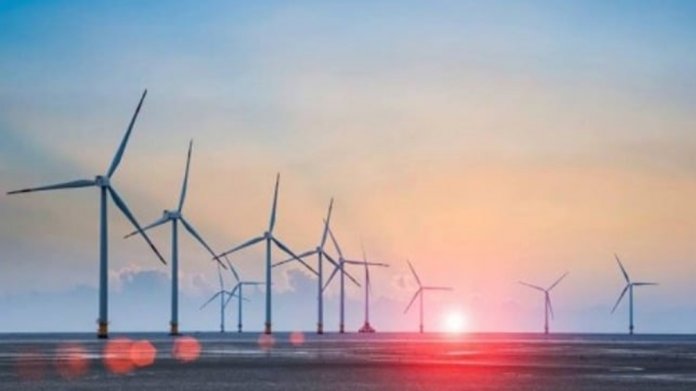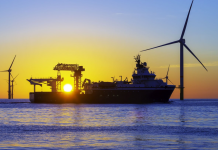
While there has been a lot of attention on the emerging offshore wind sector, a new market analysis from the American Clear Power Association (ACP) illustrates how far behind the United States is in comparison to not only global economies but small countries including Vietnam and Taiwan. The trade group for the clean power industry illustrates that while the U.S. currently lags in the global offshore wind market, the pipeline for projects is growing rapidly with more than 51 GW already identified and the scoping process continuing.
According to the report, the United States currently ranks tenth based on global installed offshore wind capacity with a paltry 42 MW of offshore wind capacity online. That’s less than five percent of the capacity of Vietnam and 0.0013 percent of the capacity of world leader China. China has over 31 GW of installed wind capacity having flown past the UK which is at approximately 14 GW installed. Other leaders are Germany, the Netherlands, Denmark, and Belgium.
Yet, while the U.S. is far behind on installed capacity, the pipeline is swelling quickly according to ACP. They calculate the total capacity of identified projects that have completed at least initial leases is nearly 51.4 GW. The U.S. has 32 leases in active development with two projects with 948 MW of capacity under construction in federal waters, Avangrid and Copenhagen Infrastructure Partners’ 816 MW Vineyard Wind 1 and Ørsted and Eversource’s 132 MW South Fork Wind Farm.
Most of the U.S. pipeline remains in the development stage with 18 projects in advanced stages which include signing offtake agreements or proceeding with equipment orders. These projects will add more than 16.5 GW while there are an additional 18 projects with the capacity for nearly 33.9 GW in early-stage development. Those projects have completed leases and are starting the permitting and agreements process.
”The rapid growth in the U.S. offshore wind pipeline reflects strong federal and state government commitment to clean energy expansion and the industry’s response to these goals,” said John Hensley, VP of Research & Analytics for ACP.
Most of the current capacity in development the report says will start to come online in 2026 and beyond. They highlight the Biden Administration’s goal of 30 GW of installed capacity by 2030 noting that the Bureau of Ocean Energy Management (BOEM) is continuing to pursue its Path Forward launched in 2021. The current timeline calls for lease auctions in the Gulf of Mexico, Central Atlantic, and off the coast of Oregon all in 2023, and the Gulf of Maine in 2024.
The trade group also highlights the broader economic benefits from the emerging industry. In total, they calculate that more than 30 new or refit vessels have been ordered or under construction at U.S. shipyards, with more in the pipeline. While Dominion Energy’s Charybdis wind turbine installation vessel is the sole installation vessel, orders have been placed for support vessels including a subsea rock installation vessel. ACP also highlights to meet the Jones Act requirements there are plans to build vessels for feeder installation strategies.
The report calculates that there are at least 21 known crew transfer vessels that have been ordered or are already under construction in the U.S., with one existing vessel retrofit to serve as a CTV. Additionally, there are three service operation vessels (SOVs) ordered or under construction with three more existing vessels being retrofitted as SOVs to serve the U.S. offshore wind industry.
In the components supply chain, there are currently two cable facilities and one offshore substation facility in operation. Fourteen additional facilities have been announced or are under construction.
Hensley added, “While the U.S. offshore wind industry is making tremendous strides, it’s essential to address the challenges to ensure the long-term economic viability of these projects. A strong, collaborative approach between industry stakeholders and government bodies will help us tackle obstacles – like clarifying permitting processes – and realize the full potential of offshore wind as a key component of our clean energy future.”
The ACP highlights that project costs are rising due to supply chain disruptions, commodity price increases, macroeconomic inflationary pressures, and higher interest rates. Rising steel prices in particular pose challenges for offshore wind developers the group says highlighting that steel represents a significant portion of project material costs. Lengthy and unclear permitting and regulatory timelines make issues worse the report highlights. Resolution of these permitting and siting challenges, alongside improving economic conditions, would strengthen the economic viability of offshore wind projects concludes the ACP.
The report concludes that the industry is making strong progress and with its current pipeline has the potential to power more than 20 million homes. They also point to the strong economic contributions while cautioning that more has to be done to realize the potential that is in the pipeline and maintain the momentum.
Source – THE MARITIME EXECUTIVE




